
Find Help
More Items From Ergsy search
-

What is a lumbar puncture?
Relevance: 100%
-
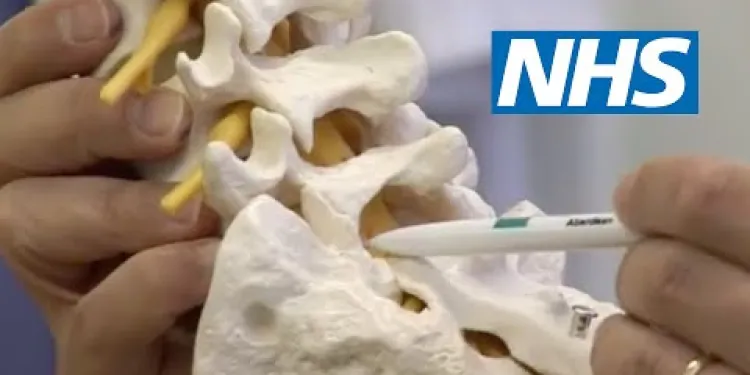
Lumbar surgery | NHS
Relevance: 49%
-
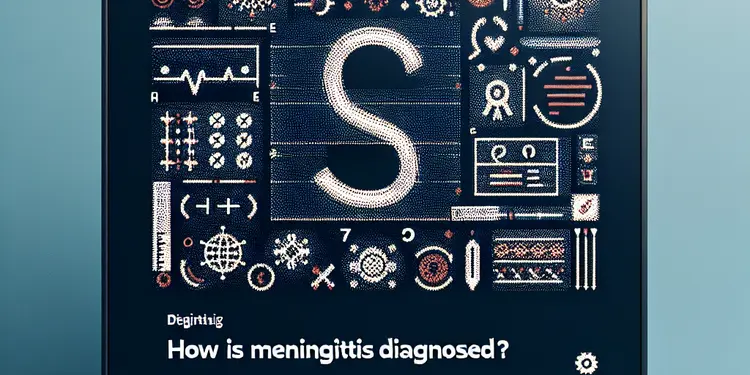
How is meningitis diagnosed?
Relevance: 36%
-

What is meningitis?
Relevance: 27%
-

What is the treatment for bacterial meningitis?
Relevance: 24%
-

How is motor neurone disease diagnosed?
Relevance: 24%
-

What is non-infectious meningitis?
Relevance: 18%
-

Why is meningitis a medical emergency?
Relevance: 18%
-

How serious is bacterial meningitis?
Relevance: 18%
-

What is the prognosis for viral meningitis?
Relevance: 17%
-

How is fungal meningitis treated?
Relevance: 17%
-
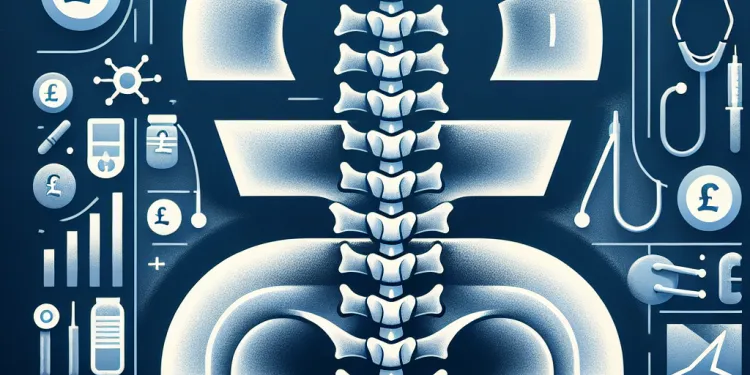
How will I be positioned for spinal anaesthesia?
Relevance: 14%
-

What is spinal anaesthesia?
Relevance: 9%
-

What are the common side effects of spinal anaesthesia?
Relevance: 9%
-

Are there specific vehicle features that assist older drivers?
Relevance: 9%
-

Is meningitis contagious?
Relevance: 9%
-

How to treat a dog bite
Relevance: 7%
-

Are there any risks associated with the womb lining test?
Relevance: 6%
-

How should Baxdrostat be stored?
Relevance: 6%
-
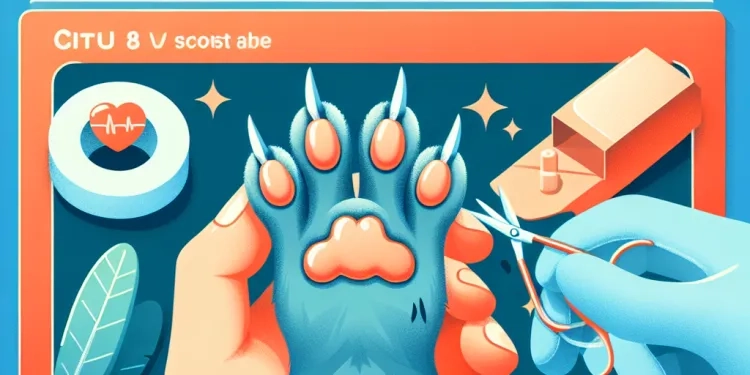
How to treat a cat bite
Relevance: 6%
-

Is spinal anaesthesia safe for a Caesarean section?
Relevance: 6%
-

What should I do if I get bitten by a spider in the UK?
Relevance: 6%
-

What causes bacterial meningitis?
Relevance: 6%
-

What are the symptoms of Marburg virus disease?
Relevance: 6%
-

What are the main types of meningitis?
Relevance: 6%
-

What causes viral meningitis?
Relevance: 6%
-

What is a Subarachnoid Hemorrhage?
Relevance: 5%
-

Think Pharmacy: Introduction for Bites and Stings
Relevance: 3%
-
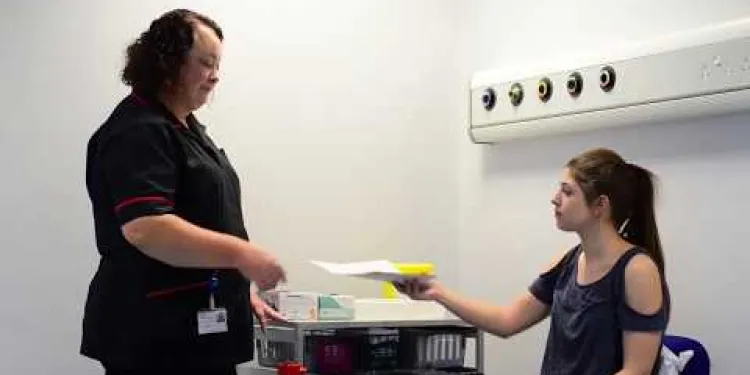
Having a blood test
Relevance: 3%
-

How do I maintain mobility equipment?
Relevance: 3%
-

How is spinal anaesthesia different from an epidural?
Relevance: 3%
-

Can GLP-1 levels be measured?
Relevance: 3%
-

What is a CA-125 test?
Relevance: 3%
Introduction to Lumbar Puncture
A lumbar puncture, also known as a spinal tap, is a medical procedure used to diagnose or treat certain conditions affecting the brain, spinal cord, or surrounding structures. It involves the collection of cerebrospinal fluid (CSF) from the spinal canal for testing, which can provide valuable information about various neurological disorders. In the UK, lumbar punctures are commonly performed in hospitals by doctors trained in neurology or anaesthesia.
Procedure Overview
During a lumbar puncture, the patient is usually asked to lie on their side with their knees drawn up to the chest, or they may sit leaning forward on a table. The healthcare professional will clean the lower back area with antiseptic and then apply a local anaesthetic to numb the area. A thin, hollow needle is carefully inserted between two lumbar vertebrae in the lower back to access the spinal canal. Once the needle is in place, CSF can be collected for analysis or, in some cases, medications or other treatments can be administered. The entire procedure typically takes about 30 to 45 minutes.
Purpose and Uses
Lumbar punctures can be used for diagnostic purposes, such as diagnosing infections like meningitis, measuring the pressure within the cerebrospinal fluid, and detecting conditions like multiple sclerosis, Guillain-Barré syndrome, or bleeding around the brain. In addition to diagnosis, lumbar punctures can also be performed for therapeutic reasons, such as relieving increased intracranial pressure or administering certain medications like chemotherapy.
Risks and Considerations
While a lumbar puncture is generally safe, it does carry some risks. These may include headache, back pain, bleeding, or infection at the puncture site. Post-lumbar puncture headache is the most common side effect and can be managed with rest, hydration, and pain medication. Serious complications are rare but can occur. Patients should discuss potential risks and benefits with their healthcare provider prior to the procedure. It is important that patients disclose any medications they are taking and any history of bleeding disorders.
After the Procedure
After the lumbar puncture is completed, the patient is usually advised to rest for a short period and may be monitored for any side effects. It is normal for some discomfort to be present at the site of the puncture. Drinking plenty of fluids and avoiding strenuous activity for the rest of the day is generally recommended. Results from the lumbar puncture can take some time to process, depending on the tests ordered, and follow-up appointments may be required to discuss these results with the healthcare provider.
What is a Lumbar Puncture?
A lumbar puncture is a medical test. It is also called a spinal tap. Doctors use it to find out about problems in the brain and back. They take a sample of fluid from the spine to test it. This can help them understand different brain and nerve problems. In the UK, doctors in hospitals usually do this test.
How is it Done?
When you have a lumbar puncture, you lie on your side or sit and lean forward. The doctor cleans your lower back. They use medicine to numb the area so you don’t feel pain. Then, they put a thin needle into your lower back to take out some fluid. The doctor might also put medicine through the needle. This takes about 30 to 45 minutes.
Why is it Done?
Doctors do a lumbar puncture to check for infections like meningitis. They can see if there is too much pressure in the fluid, or find conditions like multiple sclerosis. Sometimes, they use it to give medicine, like for cancer treatment.
Is it Safe?
A lumbar puncture is usually safe, but there can be risks. You might get a headache, back pain, or bleeding where the needle went in. A headache is the most common problem, and it can be helped with rest and drinks. Bad problems are rare. Before the test, tell your doctor about any medicine you take or if you have bleeding problems.
After the Test
After the lumbar puncture, rest for a while. The area where the needle went in might hurt a bit. Drink lots of fluids and rest for the day. It can take time to get the test results back. Your doctor will tell you what they find at a follow-up appointment.
Frequently Asked Questions
What is a lumbar puncture?
A lumbar puncture, also known as a spinal tap, is a medical procedure where a needle is inserted into the lower part of the spine to collect cerebrospinal fluid for testing or to relieve pressure.
Why is a lumbar puncture performed?
A lumbar puncture is performed to diagnose or rule out serious infections like meningitis, certain neurological conditions, or to measure the pressure in the cerebrospinal fluid.
How should I prepare for a lumbar puncture?
Before a lumbar puncture, you may be advised to avoid eating or drinking for a certain period. Inform your doctor about any medications you are taking and any allergies or medical conditions.
Is a lumbar puncture painful?
The procedure can cause some discomfort, and you may feel pressure when the needle is inserted. A local anesthetic is often used to numb the area.
How long does a lumbar puncture take?
The procedure typically takes between 30 to 45 minutes, including preparation and recovery time.
What should I expect during a lumbar puncture?
During the procedure, you'll lie on your side or sit up while the doctor inserts a needle into your lower back to collect fluid.
Are there any risks associated with a lumbar puncture?
Risks include headache, back pain, bleeding, and, rarely, infection or nerve damage.
What happens after a lumbar puncture?
After the procedure, you may need to lie flat for a few hours to prevent a headache. You'll be monitored for any adverse effects.
How should I take care of myself after a lumbar puncture?
Stay hydrated, rest, and avoid strenuous activities for a day or two. Follow any specific instructions given by your doctor.
Can a lumbar puncture be performed on children?
Yes, a lumbar puncture can be safely performed on children for diagnostic and therapeutic purposes.
What does the cerebrospinal fluid analysis show?
The fluid can show infection, inflammation, bleeding in the brain, and other central nervous system disorders.
Can I drive home after a lumbar puncture?
It is recommended to have someone else drive you home after the procedure as you might feel dizzy or have a headache.
What conditions can be diagnosed with a lumbar puncture?
Conditions like meningitis, multiple sclerosis, Guillain-Barré syndrome, and brain hemorrhages can be diagnosed.
How accurate is a lumbar puncture?
A lumbar puncture is a reliable diagnostic tool, but results should be considered along with other clinical evaluations and tests.
Can a lumbar puncture detect cancer?
It can help detect cancer cells in the cerebrospinal fluid, which suggests cancers like leukemia or lymphoma.
What should I avoid before a lumbar puncture?
Avoid blood-thinning medications and follow any dietary restrictions as advised by your healthcare provider.
How is the lumbar puncture site cleaned?
The site is cleaned with an antiseptic solution to prevent infection.
What is a 'spinal headache'?
A spinal headache is a common side effect that can occur when spinal fluid leaks, causing a headache that worsens when sitting or standing.
Is imaging required before a lumbar puncture?
In some cases, a CT scan or MRI is performed beforehand to ensure it's safe to perform the lumbar puncture.
Can a lumbar puncture be repeated if necessary?
Yes, if needed, the procedure can be repeated to monitor conditions or for additional testing.
What is a lumbar puncture?
A lumbar puncture is a medical test.
It checks the fluid around your brain and spine.
The doctor uses a special needle.
The needle goes in your lower back to get the fluid.
This helps doctors learn more about your health.
If you find reading hard, ask someone to help you.
You can also use tools that read text out loud.
A lumbar puncture is also called a spinal tap. It is a medical procedure. A doctor puts a needle in your lower back. They do this to collect fluid from your spine. This fluid is called cerebrospinal fluid. Doctors test the fluid or use it to help with pressure in your back.
Why is a lumbar puncture done?
A lumbar puncture is a test doctors do.
It helps doctors find out why you are sick.
Doctors take a little bit of fluid from your back.
This fluid can help them see if you have problems like infections.
To understand better, you can:
- Ask someone to explain it to you.
- Use pictures to help you learn.
- Talk with a nurse or doctor.
A lumbar puncture is a test that doctors use to find out if you have a serious infection like meningitis. It can also help check for problems with the brain or measure pressure in the fluid around the brain and spine.
Here are some helpful ways to understand:
- Use short sentences when explaining things.
- Ask someone to go over this with you if you're unsure.
- Look at pictures or diagrams to see what happens during the test.
- Try using audiobooks or videos to hear and see more about it.
How can I get ready for a lumbar puncture?
Before a lumbar puncture, you might be told not to eat or drink for a while. Tell your doctor about any medicine you take and if you have any allergies or health problems.
Does a lumbar puncture hurt?
A lumbar puncture is a medical test doctors use to check your back. It might feel a little uncomfortable, but doctors try hard to make it as pain-free as possible. They may use a special cream or medicine to help with the pain.
If you feel worried, talk to someone like your doctor or nurse. They can help you understand what will happen and how it might feel.
To feel better during the test, you can:
- Bring a favorite toy or book to help you feel relaxed.
- Take deep breaths to keep calm.
- Ask someone you trust to stay with you.
The doctor is going to use a needle. It might not feel nice, and you might feel a little push. They can use a special medicine to make the area numb, so it does not hurt as much.
How long is a lumbar puncture?
A lumbar puncture is when a doctor puts a needle in your back to take some fluid. This helps the doctor find out what is wrong.
It usually takes about 30 minutes. This includes getting ready and resting after.
If you find reading hard, ask someone you trust to help explain. They can use pictures or videos to make it clearer.
The whole process usually takes about 30 to 45 minutes. This time includes getting ready and resting afterwards.
What happens during a lumbar puncture?
A lumbar puncture is a medical test. It is also called a 'spinal tap'. Here is what you can expect:
- Preparation: The doctor or nurse will ask you to lie down on your side. They might ask you to curl up into a ball. This helps them reach your lower back.
- Cleaning: Your back will be cleaned with a special liquid. This makes sure everything is clean and safe.
- Medicine: You will get a little medicine to help your back not feel as much. This might feel like a small pinch.
- Needle: The doctor will use a tiny needle in your lower back. You might feel some pressure, but it should not hurt too much.
- Rest: After the test, you will need to lie still for a short time. This helps you feel better and not get a headache.
If you are scared or worried, tell the doctor or nurse. They can help you feel better. You can bring a favorite toy or blanket to hold if it helps you feel calm.
When you have this done, you'll either lie on your side or sit up. The doctor will then put a small needle into your lower back to take some fluid.
Can a Lumbar Puncture be Risky?
A lumbar puncture is a medical test. It means a doctor takes fluid from your spine. This can help find out what is wrong if you feel sick.
Sometimes, a lumbar puncture can cause problems:
- You might have a headache.
- Your back could hurt.
- You might feel dizzy or sick.
Doctors are careful to make it safe.
If you feel unwell after, tell an adult or a doctor. Using a fidget toy can help you stay calm.
There are some risks. You might get a headache or back pain. Sometimes there can be bleeding. It's very rare, but there could be an infection or damage to a nerve.
What happens after a lumbar puncture?
After a lumbar puncture, you need to rest. This can help you feel better and stop headaches. You might feel sore where the needle went in.
Lie down flat for a while. This can help stop headaches. Drink lots of water to stay hydrated. Tell someone if you don’t feel well.
A friend or family member can help you at home. They can make sure you are okay.
If you have worries or questions, ask a doctor or nurse. They can help you understand what to do.
After the treatment, you might need to lie down for a few hours. This helps stop a headache. People will check to make sure you are okay.
How can I look after myself after a back test?
Here is how you can feel better after a back test:
- Rest: Lie down and rest for a few hours.
- Water: Drink lots of water to stay hydrated.
- Pain: If you have a headache, tell an adult. They can give you pain medicine.
- Help: Ask a friend or family member if you need help with anything.
If you feel unwell, tell an adult. They can call a doctor for more help.
Drink plenty of water, get lots of rest, and don't do hard activities for a day or two. Listen to what your doctor tells you to do.
Can doctors do a lumbar puncture on kids?
Yes, doctors can do a lumbar puncture on kids. It's a test that helps doctors find out why someone is sick. Doctors are very careful when they do this test on kids.
A lumbar puncture is also called a spinal tap. It's when a doctor puts a tiny needle into the lower back to get some fluid. This fluid helps them check for infections or other problems.
If you want help to understand more, you can:
- Ask a doctor to explain it to you in simple words.
- Watch easy videos about lumbar punctures for kids.
- Bring a favorite toy or book to the doctor’s visit to help you feel calm.
Yes, doctors can do a lumbar puncture safely on children. This test helps doctors find out what is wrong or make a child feel better.
What can we learn from testing the fluid around the brain?
Cerebrospinal fluid is a liquid around your brain and back.
Doctors test this liquid to check for problems.
It helps them see if someone is sick or hurt.
Helpful tip: Use pictures or videos to understand better.
The fluid can show if there is an infection, swelling, bleeding in the brain, or other problems in the brain and spine.
Can I drive home after a lumbar puncture?
No. You should not drive home after a lumbar puncture. Ask a friend or family member to take you home. You might feel dizzy or have a headache after the procedure. It is safer to rest and let someone else drive you.
Here are some tips to help you:
- Plan ahead and arrange a ride before your appointment.
- Rest for a while at the hospital if you feel dizzy.
- Drink plenty of water to stay hydrated.
It's a good idea to ask someone to drive you home after the procedure. You might feel dizzy or get a headache.
What can doctors find out with a lumbar puncture?
A lumbar puncture is a test. It is when doctors take some fluid from your back.
This fluid can show if you have certain health problems.
Here is what a lumbar puncture can help with:
- Find out if you have an infection in your brain or spine.
- Check for bleeding in your brain.
- Diagnose diseases like Multiple Sclerosis.
- Find out if you have cancer in your brain or spine.
If you do not understand, ask a doctor or nurse to explain. They can help!
You can also use a picture or video to help you learn more.
Doctors can find out if someone has certain illnesses. These illnesses are meningitis, multiple sclerosis, Guillain-Barré syndrome, and brain bleeds.
How good is a lumbar puncture test?
A lumbar puncture is a test that helps doctors find out what's happening in your body. But they need to look at other tests and check how you're feeling to understand everything properly.
Can a lumbar puncture find cancer?
A lumbar puncture is a test. It checks the fluid around your brain and spine. Doctors use it to find out if someone has certain illnesses. This includes cancer. A lumbar puncture can help doctors see if there are cancer cells in the fluid.
If you want to know more, ask your doctor. They can explain how the test works and what it can find. You can also ask a family member or friend to help you understand.
It can help find cancer cells in the fluid around the brain and spine. This might show cancers like leukemia or lymphoma.
What not to do before a lumbar puncture?
Here are some things you should not do before a lumbar puncture:
- Do not eat or drink: Ask your doctor how long you should stop eating or drinking before the test.
- Avoid certain medicines: Some medicines can affect the test. Tell your doctor about all the medicines you take.
- No exercise before the test: It is important to rest and not strain yourself.
If you need help, ask your doctor or nurse. They can explain anything you do not understand and help you get ready for the test.
You can also ask a friend or family member to be with you for support.
Do not take medicine that makes your blood thin. Listen to your doctor about what foods you should or should not eat.
How is the lumbar puncture site cleaned?
Doctors clean the skin before doing a lumbar puncture. They use special wipes or liquid. This makes sure the area is free of germs. A clean area helps prevent infection.
Doctors might wear gloves. This keeps everything clean and safe.
If you need help understanding, ask someone to explain. You can also use pictures or videos. These can show you how doctors clean the area.
The area is cleaned with a special liquid to stop germs and keep it safe.
What is a 'spinal headache'?
A spinal headache can happen after you have a needle in your back. This is because some fluid might leak out. The headache can feel very bad.
If you have this headache, tell your doctor. They can help make it better.
You can try to lie down, drink lots of water, and rest. This can help you feel better.
A spinal headache is a type of headache that can happen after a spinal fluid leak. It makes your head hurt more when you sit or stand up.
Do I need a picture of my brain before a lumbar puncture?
A lumbar puncture is a medical test. It takes fluid from your spine. Doctors sometimes call it a spinal tap.
Before this test, doctors might need a picture of your brain. This picture is called an "imaging scan." It helps doctors see if the test is safe for you.
Ask your doctor if you need a picture of your brain before the test. They will explain everything to you.
If you find reading hard, you can ask someone to help you understand. You can also use tools like text-to-speech apps to read it out loud for you.
Sometimes, doctors do a CT scan or MRI first. This helps them check if it is safe to do the lumbar puncture.
Can you have another lumbar puncture if needed?
Yes, if needed, you can do the test again. This helps check things or do more tests.
Useful Links
- Ergsy carfully checks the information in the videos we provide here.
- Videos shown by Youtube after a video has completed, have NOT been reviewed by ERGSY.
- To view, click the arrow in centre of video.
- Most of the videos you find here will have subtitles and/or closed captions available.
- You may need to turn these on, and choose your preferred language.
- Go to the video you'd like to watch.
- If closed captions (CC) are available, settings will be visible on the bottom right of the video player.
- To turn on Captions, click settings .
- To turn off Captions, click settings again.
More Items From Ergsy search
-

What is a lumbar puncture?
Relevance: 100%
-

Lumbar surgery | NHS
Relevance: 49%
-

How is meningitis diagnosed?
Relevance: 36%
-

What is meningitis?
Relevance: 27%
-

What is the treatment for bacterial meningitis?
Relevance: 24%
-

How is motor neurone disease diagnosed?
Relevance: 24%
-

What is non-infectious meningitis?
Relevance: 18%
-

Why is meningitis a medical emergency?
Relevance: 18%
-

How serious is bacterial meningitis?
Relevance: 18%
-

What is the prognosis for viral meningitis?
Relevance: 17%
-

How is fungal meningitis treated?
Relevance: 17%
-

How will I be positioned for spinal anaesthesia?
Relevance: 14%
-

What is spinal anaesthesia?
Relevance: 9%
-

What are the common side effects of spinal anaesthesia?
Relevance: 9%
-

Are there specific vehicle features that assist older drivers?
Relevance: 9%
-

Is meningitis contagious?
Relevance: 9%
-

How to treat a dog bite
Relevance: 7%
-

Are there any risks associated with the womb lining test?
Relevance: 6%
-

How should Baxdrostat be stored?
Relevance: 6%
-

How to treat a cat bite
Relevance: 6%
-

Is spinal anaesthesia safe for a Caesarean section?
Relevance: 6%
-

What should I do if I get bitten by a spider in the UK?
Relevance: 6%
-

What causes bacterial meningitis?
Relevance: 6%
-

What are the symptoms of Marburg virus disease?
Relevance: 6%
-

What are the main types of meningitis?
Relevance: 6%
-

What causes viral meningitis?
Relevance: 6%
-

What is a Subarachnoid Hemorrhage?
Relevance: 5%
-

Think Pharmacy: Introduction for Bites and Stings
Relevance: 3%
-

Having a blood test
Relevance: 3%
-

How do I maintain mobility equipment?
Relevance: 3%
-

How is spinal anaesthesia different from an epidural?
Relevance: 3%
-

Can GLP-1 levels be measured?
Relevance: 3%
-

What is a CA-125 test?
Relevance: 3%


